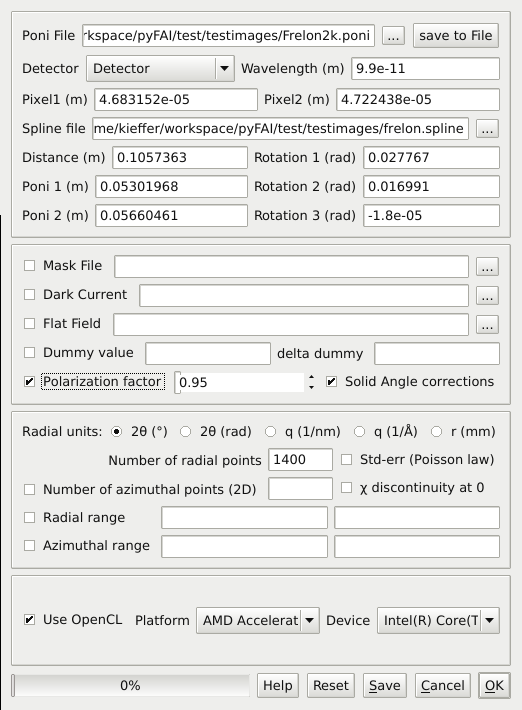Integration tool: pyFAI-integrate¶
Purpose¶
PyFAI-integrate is a graphical interface (based on Python/Qt4) to perform azimuthal integration on a set of files. It exposes most of the important options available within pyFAI and allows you to select a GPU (or an openCL platform) to perform the calculation on.

Usage¶
pyFAI-integrate [options] file1.edf file2.edf ...
Options:¶
-h, --help show this help message and exit -V, --version show program’s version number and exit -v, --verbose switch to verbose/debug mode -o OUTPUT, --output OUTPUT Directory or file where to store the output data -f FORMAT, --format FORMAT output data format (can be HDF5) -s SLOW, --slow-motor SLOW Dimension of the scan on the slow direction (makes sense only with HDF5) -r RAPID, --fast-motor RAPID Dimension of the scan on the fast direction (makes sense only with HDF5) --no-gui Process the dataset without showing the user interface. -j JSON, --json JSON Configuration file containing the processing to be done --monitor-name MONITOR_KEY Name of the monitor in the header of each input files. If defined the contribution of each input file is divided by the monitor. If the header does not contain or contains a wrong value, the contribution of the input file is ignored. On EDF files, values from ‘counter_pos’ can accessed by using the expected mnemonic. For example ‘counter/bmon’.
Tips & Tricks:¶
PyFAI-integrate saves all parameters in a .azimint.json (hidden) file. This JSON file is an ascii file which can be edited and used to configure online data analysis using the LImA plugin of pyFAI.
Nota: there is bug in debian6 making the GUI crash (to be fixed inside pyqt) http://bugs.debian.org/cgi-bin/bugreport.cgi?bug=697348